kottke.org posts about design
The Daily Mail has a profile of Apple’s lead designer, Jony Ive…some bits in there that I hadn’t read before, including this strange anecdote about a bad meeting that may have led to Ive’s departure to Apple:
‘We lost a great talent,’ says Grinyer. ‘We virtually created our own consultancy, Tangerine, just so that we could employ Jony (as Ive prefers to be called). And if I had to put my finger on why and where we lost him it would have to have been one day at Ideal Standard in Hull.
‘Tangerine had a consultancy contract with the bathroom-fittings company to design a toilet. I was there when Jony made an excellent presentation to this guy who was wearing a red nose because it was Comic Relief day. This clown then decided to throw his weight around and pulled apart Jony’s design. It was ridiculous. Britain lost Jony Ive then and there.’
Here’s a collection of video and stills from most of the movie title sequences created by Saul Bass.
“PROJECTIONISTS - PULL CURTAIN BEFORE TITLES”.
This is the text of a note that was stuck on the cans when the reels of film for “The Man With the Golden Arm” arrived at US movie theatres in 1955. Until then the credits were referred to as ‘popcorn time.’ Audiences resented them and projectionists only pulled back the curtains to reveal the screen once they’d finished. Saul Bass’ powerful title sequence for “The Man With the Golden Arm” changed the way directors and designers would treat the opening titles.
Designer Jessica Walsh shares the photo setup she uses to document her work.
I cobbled together this set up out of the desire to properly archive my design work. Next thing I knew I started getting paid for it, and it became an integral part of my work. I am simply listing my equipment and a little bit about what I know to get some designers started in figuring out the best way to shoot their own work.
You can see the gorgeous results in her portfolio.
magCulture has a pre-release look at the new NY Times Magazine.
Redesigns are always interesting, and non more so than when a title as significant and influential as the NYT makes changes. Duplessis has worked with new editor Hugo Lindgren (ex-Bloomberg Business Week and New York magazine) to provide a new vision for the title, researching the magazine’s archive and becoming fascinated by its 60s and 70s incarnations.
For some reason, it reminds me of Monocle, even though it probably shouldn’t? (thx, @nedward)
For the past five years, Michael Bierut has taught a class for aspiring designers where students have to record the results of “a design operation that [they] are capable of repeating every day” for 100 straight days. Here are some of the results.
Zak Klauck: “Over the course of 100 days, I made a poster each day in one minute. The posters were based on one word or short phrase collected from 100 different people. Anyone and everyone was invited to contribute.” The perfect exercise for a graphic designer.
Well worth a listen: Dan Benjamin interviews Mike Monteiro on The Pipeline podcast about his design work and Twitter infamy. The last 10 minutes or so, where Mike calls out designers who don’t talk to clients, is gold. One of the reasons I got out of design is that I was never very good at that part of the job and as Mike says, you have to be able to not only accept but embrace selling your designs to truly succeed.
While we’re being all nostalgic, here’s what Gizmodo looked like when it launched:

The site, which launched several months before Gawker, was designed & developed by Ben and Mena Trott with the couple’s relatively new blogging software, Movable Type.
With all the buzz around the new Gawker design, I figured I’d dig out the first design I ever showed Nick for the site back in October of 2002:

Nick didn’t like it too much. Background too dark, masthead text not logo-y enough. Two weeks later, I sent him this, with a half-assed technicolor logo that I’d dashed off in Photoshop in like 30 minutes:
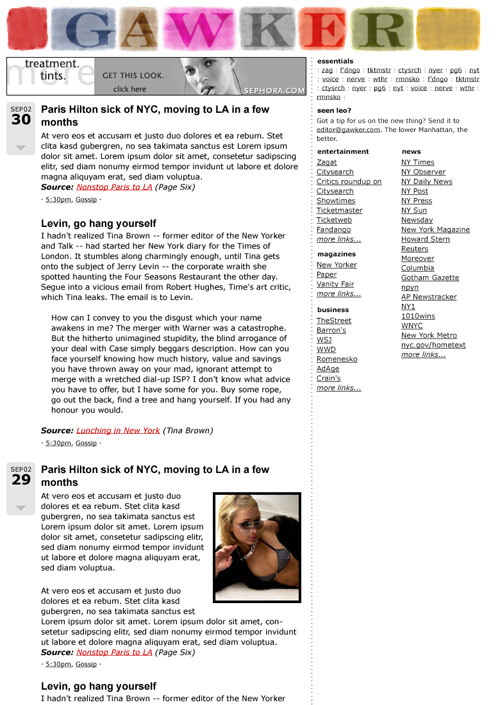
To my shock, he loved it — so much so that they’re still using the damn thing! — and that design was very close to how the site looked when it launched.
A selection of Woody’s movie eyewear from the full poster.
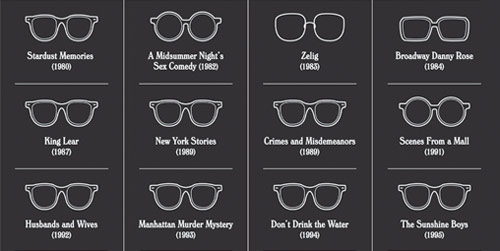
(thx, ben)
If Mandelbrot and Mondrian had a baby, it might look a little something like this:
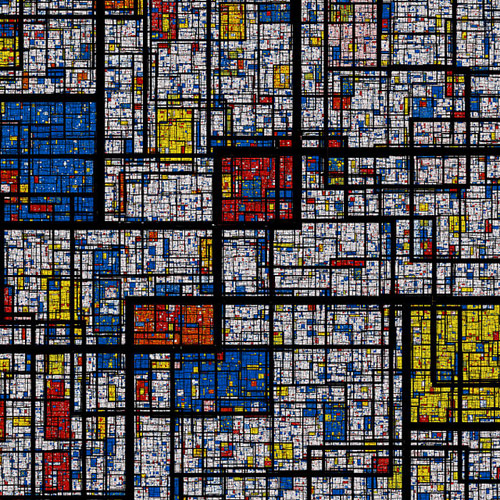
Awesome. There’s also a zoomable version but not a very deep one…would be nice to have an infinitely zoomable version in Processing or something.
Steven Heller had heard rumors of a Nazi graphics standards manual for years and finally tracked one down.
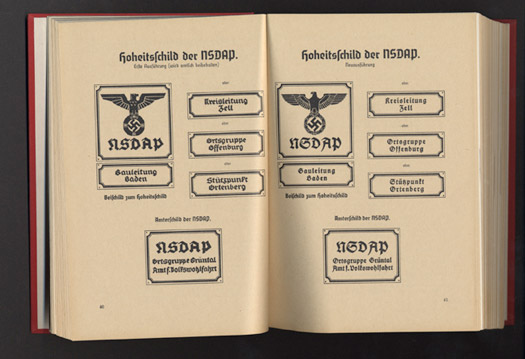
Published in 1936, The Organizationsbuch der NSDAP (with subsequent annual editions), detailed all aspects of party bureaucracy, typeset tightly in German Blackletter. What interested me, however, were the over 70 full-page, full-color plates (on heavy paper) that provide examples of virtually every Nazi flag, insignia, patterns for official Nazi Party office signs, special armbands for the Reichsparteitag (Reichs Party Day), and Honor Badges. The book “over-explains the obvious” and leaves no Nazi Party organization question, regardless of how minute, unanswered.
More photos and a copy for sale here.
Nicholas Felton has been doing personal annual reports since 2005. But for 2010, he did a report of his late father’s life utilizing various documents (birth certificates, notebooks, slides, etc.).

This is a marvelous document. Here’s a photo of some of the source materials.
Some lovely drawings from Dana Tanamachi, a graphic designer and “custom chalk letterer”.
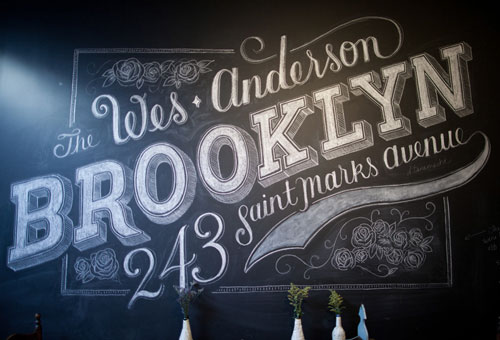
Here’s a timelapse of Tanamachi at work. (via @h_fj)
An infographic that stitches together the 15 films that the Coen brothers have made.
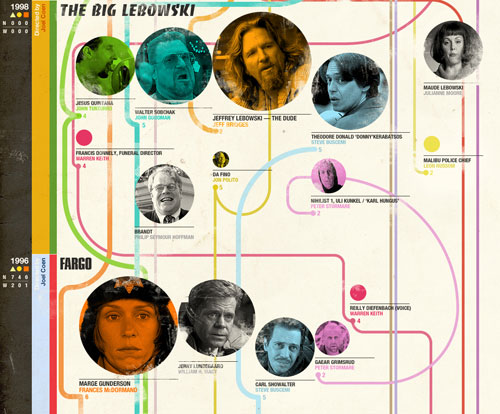
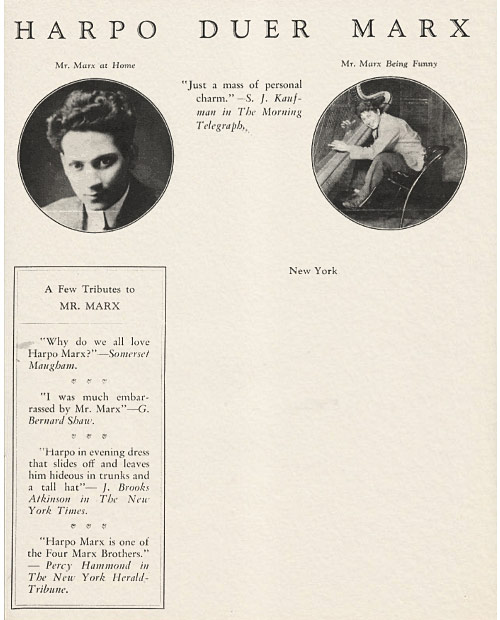
I love the reviews and mentions down the left-hand side…”Harpo Marx is one of the Four Marx Brothers.” (via if charlie parker…)
A long photo essay on the hallways and corridors of science fiction movies and television.
Alien started the kind of corridor-fetishism in screen sci-fi that Kubrick had failed to start with 2001: A Space Oddyssey, since the latter film was so visionary and expensive that practically no-one could even attempt to imitate it.
Instead Roger Christian got inventive with his lower budget and strip-mined an aircraft graveyard, strewing Alien’s Nostromo with sections and detailing from WWII bombers. This usage of full-sized ‘nurnies’ followed the long-established visual effects practice of cannibalising parts from model kits (most especially WWII tanks and destroyers) in order to provide ready-made detailing without resort to custom-crafting and vacuum-forming every last valve and pipe. By the time the 1980s set in, Alien’s strip-mined tech was practically de rigeur for screen sci-fi…
(via @moleitau)
Soap bars are more efficient than liquid soap dispensers but are also a messy pain in the ass. Enter design student Nathalie Stämpfli’s Soap Flakes. It works like a pump dispenser and grates a small amount of soap into your hand when you pump the handle.

Today, most of the soap we use is liquid soap, which contains a lot of water. Block soap instead is more concentrated and therefore has some ecological benefits: You don’t transport unnecessary water around. In place of plastic bottles you can simply use paper for packaging. The solid blocks can easily be piled and allow a greater space efficiency in a truck.
But what about the usage of soap bars? I don’t like the weird slippery feeling when I use them. It gives me goose bumps. And under the shower, it always slides out of your fingers. Hand soap also often gets dirty and accumulates bacteria when more than one person is using it.
Two very different lists of the best movie posters from last year: the more indie-oriented list from Mubi and the mainstream one from FirstShowing. The Mubi list is better but you may recognize more of the films from the FirstShowing list.
Still pining for early 1990s Ray Gun? David Carson is starting a new magazine you might like called Carson.
“It’s not about being retro,” explained Alex Storch, the Editor-in-Chief. “It’s about pushing forward. People want quality things they can hold and touch, not pseudo-journalism and themed template design on their computers. We’re excited for people that have only seen David’s books and a heavily worn copy of Ray Gun to experience his mastery of the form. We’d also like them to read some inspiring articles as well.”
Mule Design’s Mike Monteiro wrote a cracking guide on how clients can give better feedback to designers.
Let the design team be the design experts. Your job is to be the business expert. Ask them how their design solutions meet your business goals. If you trust your design team, and they can explain how their recommendations map to those goals, you’re fine. If you neither trust them, nor can they defend their choices it’s time to get a new design team.
This should be printed out and nailed into the forehead of every designer and their clients a la Luther’s Ninety-Five Theses, you know, for easy reference.
For an exhibition in Rome, Konstantin Grcic has collected a bunch of products that are basically black rectangles.
Among the items he included are a gravestone, a wallet, soap, a table, a perfume bottle, a cooking pot, a television set, a cart, an accordion, a Sudoko cube, a fireplace, a laptop, a Chanel handbag, a gas tank, a bible and Prince’s “Black Album,” from 1987. “How is it that so many different things made in so many different ways end being black rectangles?” Mr. Grcic asked. “They can be extremely elegant and sophisticated, or very basic, but they are such strong and powerful parts of our lives that it is impossible to imagine a world without them.”
It’s funny…in the column of photos accompanying the Times article, Grcic looks a bit like a black rectangle himself.
Nice little sketch by BERG’s Matt Jones for a multiuser iPad UI.
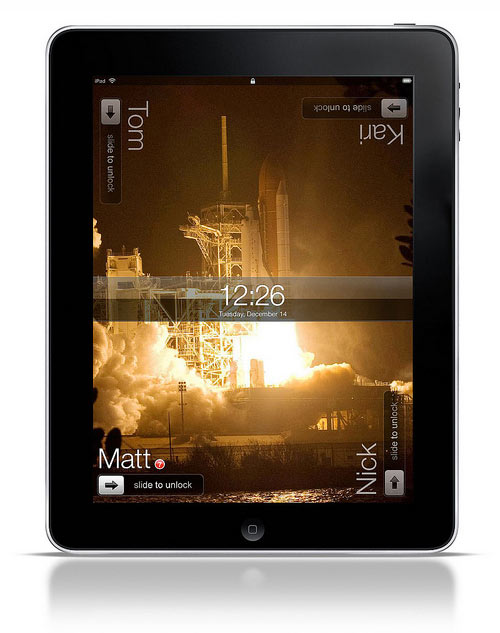
I’m going to be commentating a semifinal Layer Tennis match between Mark Weaver and Mig Reyes tomorrow at noon Eastern time. The twist: there’s a secret ingredient:
Today’s competitors have cooked up a little something different for you today; they have suggested that we go Iron Chef style for this match. So, I have chosen a “secret ingredient” for today’s match in the form of a design element that will need to be used in each volley.
If either of the competitors wants to know the ingredient before match-time tomorrow, it’ll cost you $500…or $1200 for exclusive knowledge. Personal checks accepted.
Favorite Tumblr of the week: Fake Criterions, featuring mockups of Criterion films that would never get made. For example:
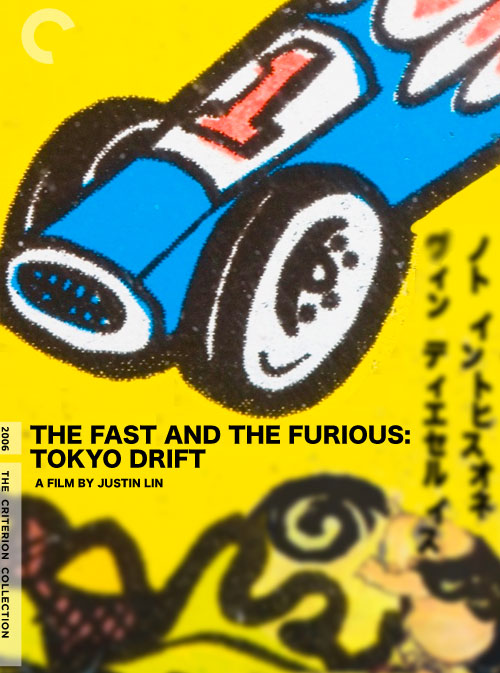
Note: a surprising non-fake Criterion is Michael Bay’s Armageddon. Well, it does feature Steve Buscemi and Oscar winners Billy Bob Thornton and Ben Affleck. (thx, george)
A really nice analysis of the readability of maps from the three big online mapping companies: Google, Bing, and Yahoo. As you might expect, Google is the clear winner; they pay more attention to the little details than the other two services.
It turns out that Google uses a variety of techniques and visual tricks to help make its city labels much more readable than those of its competitors. From the use of different shadings to decluttering areas outside of major metro areas, it sure seems like Google has put a lot of thought into how it displays the labels appearing on its maps. I have no doubt that little touches like these are among the many reasons why Google remains the web’s most popular mapping site.
Prompted by someone challenging the attribution of a paper bag in a recent exhibition, MoMA tracks down who invented the brown paper bag.
It was slightly later that a woman named Margaret Knight, working for another company, the Columbia Paper Bag Company of Springfield, MA, designed a machine that could produce flat/square-bottomed paper bags, a great improvement on the earlier, structurally weaker envelope-style bag design. As a result, it is Knight who is more widely recognized as the inventor of the paper bag in the general form of the one shown in Counter Space. She’s also believed to be the first woman to achieve a U.S. patent.
Khoi Vinh has a new book coming out next month called Ordering Disorder: Grid Principles for Web Design.
“Ordering Disorder” is an overview of all of my thoughts on using the typographic grid in the practice of Web design. The first part of the book covers the theories behind grid design, the historical underpinnings of the grid, how they’re relevant (and occasionally irrelevant) to the work of Web designers — and a bit of my personal experience coming to grips with grids as a tool.
The second part of the book, which makes up its bulk, walks readers through the design of a full Web site from scratch, over the course of four projects.
Vinh did the art direction for the book himself, so it’s bound to be purty (and grid-y). The perfect early holiday gift for the web designer in your life.
The Paris vs New York blog presents a series of illustrated comparisons between the two cities: macaroons vs. cupcakes, baguette vs bagel, and espresso vs American coffee:
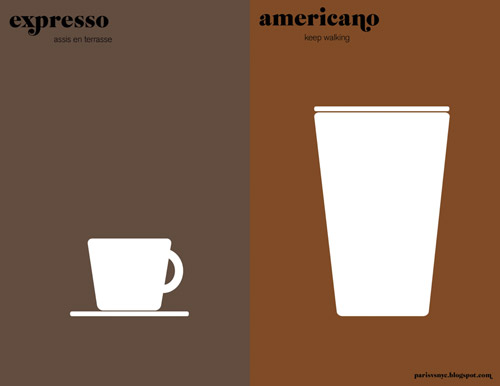
Newer posts
Older posts
















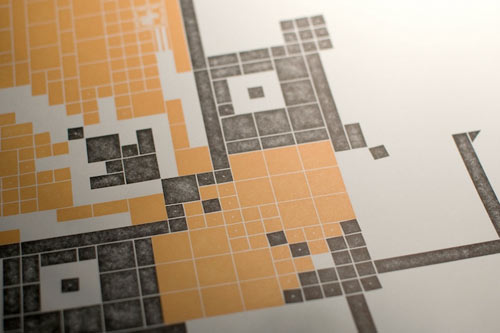




Stay Connected